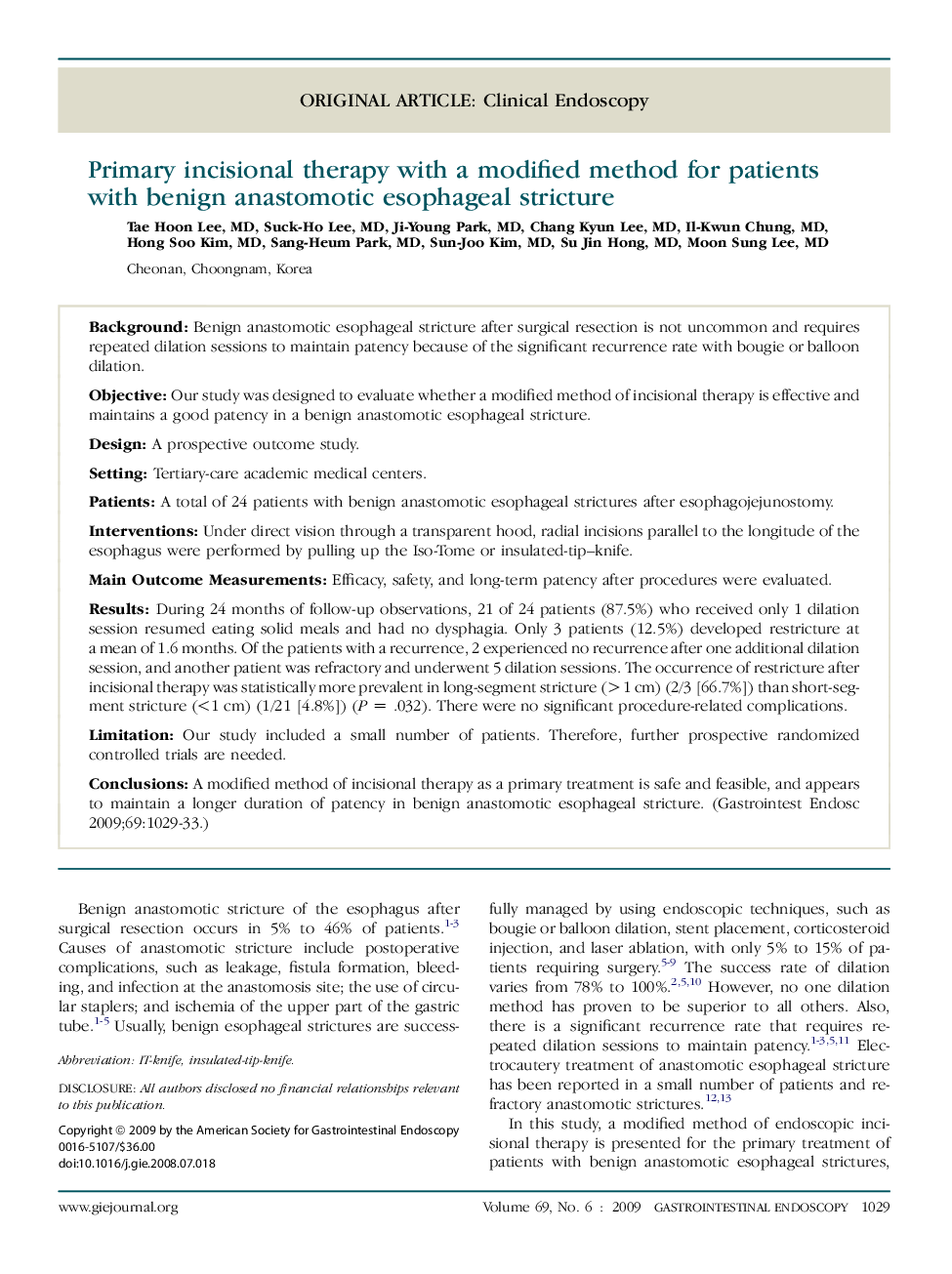| Article ID | Journal | Published Year | Pages | File Type |
|---|---|---|---|---|
| 3308097 | Gastrointestinal Endoscopy | 2009 | 5 Pages |
BackgroundBenign anastomotic esophageal stricture after surgical resection is not uncommon and requires repeated dilation sessions to maintain patency because of the significant recurrence rate with bougie or balloon dilation.ObjectiveOur study was designed to evaluate whether a modified method of incisional therapy is effective and maintains a good patency in a benign anastomotic esophageal stricture.DesignA prospective outcome study.SettingTertiary-care academic medical centers.PatientsA total of 24 patients with benign anastomotic esophageal strictures after esophagojejunostomy.InterventionsUnder direct vision through a transparent hood, radial incisions parallel to the longitude of the esophagus were performed by pulling up the Iso-Tome or insulated-tip–knife.Main Outcome MeasurementsEfficacy, safety, and long-term patency after procedures were evaluated.ResultsDuring 24 months of follow-up observations, 21 of 24 patients (87.5%) who received only 1 dilation session resumed eating solid meals and had no dysphagia. Only 3 patients (12.5%) developed restricture at a mean of 1.6 months. Of the patients with a recurrence, 2 experienced no recurrence after one additional dilation session, and another patient was refractory and underwent 5 dilation sessions. The occurrence of restricture after incisional therapy was statistically more prevalent in long-segment stricture (>1 cm) (2/3 [66.7%]) than short-segment stricture (<1 cm) (1/21 [4.8%]) (P = .032). There were no significant procedure-related complications.LimitationOur study included a small number of patients. Therefore, further prospective randomized controlled trials are needed.ConclusionsA modified method of incisional therapy as a primary treatment is safe and feasible, and appears to maintain a longer duration of patency in benign anastomotic esophageal stricture.
